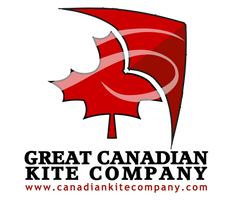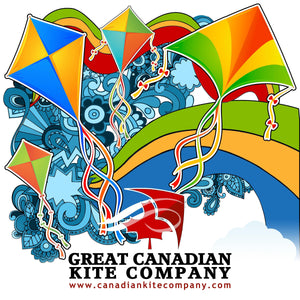Why do we Sleeve Spectra Kite Lines?
 Kite line Sleeving
Kite line Sleeving
(You can find this article in our Kite Resources section too!)
Line sets are an important and costly necessity of flying your multiline sport kite, so it is important to make sure that you take steps to protect your line sets to maintain performance, increase longevity of the line and save you money.
Sleeving is like a tube sock that we put on the ends of spectra kite lines or any place where we tie a knot. Sleeving is made of hollow braided Dacron and is usually positioned at either end of each line where the line connects via a Larkshead Knot to the flying straps or to the kite tow point.
Spectra kite line, while stronger than steel, has a relatively low melting point. Wherever there is a knot in the line this is a place of friction which creates heat and will significantly reduce the strength of your spectra line and will be the point of a line break.
This sleeving material acts like a heat diffuser by reducing and diffusing the heat generated by friction at the knot.
Sleeving Your lines.
At Great Canadian Kite Company, all of the sport kite spectra line sets we sell comes pre-sleeved. We are pleased to offer a variety of quality kite line that provides good braid braid, performance and kite line life. That being said it is possible to purchase line sets that are not sleeved, or perhaps you wish to buy bulk kite line and make your own line sets and then a kite line sleeving kit is a valuable tool.
To make your own line sets you will first want to stretch your lines and make them equal length. With cheaper line (even cheaper spectra labeled line) you can expect lines to stretch as much as 12-15% where quality line sets may stretch 4-6%. The point is line will stretch with use and it may be necessary to equalize your lines from time to time.
Once your lines are stretched and measured you are ready to sleeve each end. Our Sleeving kits come with simple instruction, two different colours of sleeving and a sleeving tool. Here are the basic steps to sleeving your spectra kite line:
- Sleeve one end of the line at a time making sure that you use the same colour of sleeving for both ends of the same line. This is really helpful to help you keep straight which line goes to each side of the kite and which its corresponding flying strap.
- Insert the sleeving tool through the sleeving. Pull the tool a few centimetres through the sleeving.
- After the tool is inserted through the sleeve carefully take a lighter and melt the ends of the dacron for a clean looking sleeving job. This will keep the sleeving from fraying.
- Thread your Spectra line through the end of the sleeving tool and pull the tool back through the dacron sleeving bringing the kite line with it.
- With the sleeving now on your line, you can remove the sleeving tool.
- Slide the sleeving towards the end of the line being careful not to go too far or you will have to reinstall the sleeve using the sleeving tool.
- Tie a knot in the very end of the line (including the sleeve).
- Stretch the sleeving back up the line so it won't bunched up.
- Tie another knot at the end farthest from the end.
- Bring these two knots together and make a loop as shown below. Make sure this loop is big enough that you can easily tie a Larkshead knot to attach to the kite or flying straps. Ensure these loops are the same size on each end of each line.
The end of the line is now sleeved and you can repeat the process for each of the other lines. Remember: make sure you have the same colour sleeving on the ends of the same line.



 There are a variety of terms that are used in the sport of Kite flying. Here is a short
There are a variety of terms that are used in the sport of Kite flying. Here is a short

